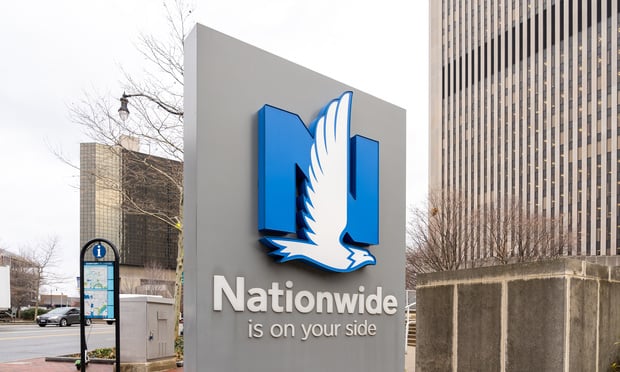Second-Hand Smoke: Next Black Lung?
The best thing about underwriting is that there is always a new risk to consider and analyze. The worst thing about underwriting is that there are always new loss sources that cause your loss ratio to elevate when the plan for it is to decline.
One of the latest new loss sources has the potential to assault both your general liability and workers' compensation results. The exposure makes every day a new offense, causing the coverage triggers to fire endless occurrence dates.
The source? Second-hand smoke, also known as “passive smoke,” “environmental tobacco smoke” and “toxic tobacco smoke.”
There is overwhelming evidence that second-hand smoke (SHS) causes lung cancer and heart disease, as well as asthma attacks. The U.S. Environmental Protection Agency states that SHS is a “known cause” of lung cancer in humans and has classified it as a Group A carcinogen. EPA attributes an estimated 3,000 deaths in the United States from lung cancer and 35,000 from heart disease to the effects of SHS.
Why is this important to insurers, agents and risk managers? Because it could raise loss costs and premiums for the affected coverages.
Although working in a smoke-filled environment is voluntary, work is not when you have bills to pay. Jobs are hard to find, and a person is sometimes limited as to where they can work because of their education or competence. They have the right to a risk-free workplace and could sue if harmed on the job by exposure to second-hand smoke.
Could SHS ever be viewed the same way as black lung disease in the coal mining industry? Those employees voluntarily worked for the coal mines, too.
More and more state and local governments are moving to address the problem. The Connecticut Senate, for example, recently passed a bill (103-43) designed to “protect workers and customers from the dangers of second-hand smoke.” This smoking ban expands to prohibit smoking in the workplace with five or more employees.
However, many areas have no such legal protections, leaving it up to employers to set the rules. If smoking is allowed, potential liability follows. People are being hurt by controllable conditions and thats where lawsuits begin. The responsibility for prevention is placed on the business allowing harm to occur.
Even customers could theoretically sue. Clearly a patron has a choice whether to go to an establishment that allows smoking, but what if there is not sufficient ventilation? What keeps someone from claiming they have been harmed and their right to fresh and pure air violated because they can smell the smoke across the room?
The insured is responsible for the operation of their business, as well as the safety of their employees and patrons, and every day of second-hand smoke exposure is considered a new occurrence. CGL policies could be hard hit if such suits become a trend.
This is not a hard exposure to authenticate. Cotinine is a major metabolite of nicotine. The exposure to nicotine can be measured by the amount of cotinine in the blood, saliva or urine. It is very specific to tobacco smoke. That means the measurement of the injury is as clear as the measurement of other toxins for industrial hygiene exposures. It can be traced back to the place of origin.
At immediate risk are taverns, casinos, restaurants, social and fraternal organizations, religious groups–indeed, any operation that allows smoking in the workplace. Can you imagine having to evaluate the industrial hygiene exposure of a tavern?
At risk are the employer liability limits of the workers' comp contract because employees might claim that the employer (the insured) has caused an unsafe workplace by allowing smoking.
Also at risk are your general liability limits, as patrons sue for exposure to measurable levels of carcinogens when they visited the insured establishment. And since there is no foreseeable limit to the occurrence triggers, the legal defense will be a nightmare.
Immediate controls could be (but are not limited to) inspection of location to include information on these practices, a $10,000 to $25,000 deductible, declination of operations that allow workplace smoking, and partnering with agents to make changes towards this practice.
The deductible will take care of the nuisance claims, which are to be expected. Developing a “smoke-free” workplace insurance program is not only good public relations, but also eliminates this risk. A smoke-free credit could be offered to encourage smoking restrictions, or a surcharge added for those allowing smoking.
Studies have shown that employees who work in a smoke-filled environment suffer higher absenteeism and lower productivity, while such firms experience increasing health insurance rates and liability claims. Given that reality, you would think insureds would recognize the overall value of changing their policies to assure a safer, lawsuit-proof workplace. Try to sell it this way to your clients and reform might happen.
Since SHS is not yet considered unlawful in most areas, there may be coverage. Perhaps we should all lobby to eliminate the exposure in the first place.
Barbara Reardon, a freelance writer, has 28 years of experience as an underwriter and trainer. She may be reached at [email protected].
Reproduced from National Underwriter Property & Casualty/Risk & Benefits Management Edition, June 30, 2003. Copyright 2003 by The National Underwriter Company in the serial publication. All rights reserved.Copyright in this article as an independent work may be held by the author.
Want to continue reading?
Become a Free PropertyCasualty360 Digital Reader
Your access to unlimited PropertyCasualty360 content isn’t changing.
Once you are an ALM digital member, you’ll receive:
- Breaking insurance news and analysis, on-site and via our newsletters and custom alerts
- Weekly Insurance Speak podcast featuring exclusive interviews with industry leaders
- Educational webcasts, white papers, and ebooks from industry thought leaders
- Critical converage of the employee benefits and financial advisory markets on our other ALM sites, BenefitsPRO and ThinkAdvisor
Already have an account? Sign In Now
© 2025 ALM Global, LLC, All Rights Reserved. Request academic re-use from www.copyright.com. All other uses, submit a request to [email protected]. For more information visit Asset & Logo Licensing.








